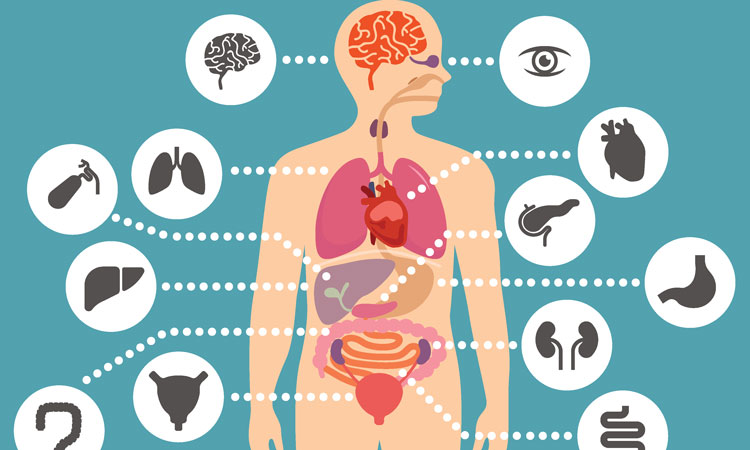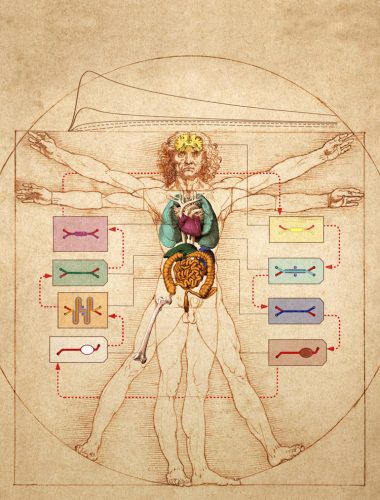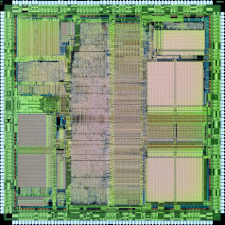Body-on-chip technology: resolving current limitations in drug discovery
Posted: 30 January 2020 | Victoria Rees (Drug Target Review) | No comments yet
Researchers have developed a new body-on-chip technology that can demonstrate the pharmacokinetics and pharmacodynamics of drugs in a pre-clinical setting without the need for animal testing.


Current estimates predict that less than 15 percent of all tested drugs demonstrate eventual clinical success and obtain approval from the US Food and Drug Administration (FDA).1 Developing a drug candidate from its pre-clinical phase is therefore no mean feat and it is critical that drugs are screened thoroughly before they reach clinical stages to ensure that time and money are saved.
Furthermore, increasing ethical concerns surrounding the use of animal studies is encouraging researchers to identify methods of testing compounds to ascertain their effectiveness before they fail in clinical trials.
One solution to that has been developed to address this is ‘organ-on-a-chip’ (organ chip) technology. Now, a team led by the University of Harvard’s Wyss Institute for Biologically Inspired Engineering, US, have created the first ‘body-on-chip’ technology that recapitulates human system level physiology and pathophysiology with high accuracy.
Speaking to Drug Target Review’s Victoria Rees, Dr Donald Ingber, Wyss Founding Director, Judah Folkman Professor of Vascular Biology at Harvard Medical said: “The linked organs within the body-on-chip model can predict what drug administration regimens produce optimal efficacy at the target organ while minimising toxicity in other organs.”
“We hope that this tool will be able to serve as a supporting tool for labs and drug companies, for increasing their success rate in the clinical phase and enabling them to test the drug on a human-relevant model,” explained Dr Ben Maoz, a co-first author on the second study and former Technology Development Fellow at the Wyss Institute, currently an Assistant Professor at Tel Aviv University, Israel, to Drug Target Review.
The need for animal models
Previous studies have required animal models in pre-clinical testing to characterise a drug compound’s pharmacokinetics, which involves its rate of absorption, distribution, metabolism and excretion (ADME). These factors all determine the drug concentration in the blood.
Pharmacodynamics is another reason for the use of animal models in drug development; the effects of the drug on its target organ(s), which underlies its mechanism of action, will allow any adverse effects to be observed.
Researchers are then able to decide whether their candidate is suitable and safe for clinical testing.
What are organ chips?
However, this nature of pre-clinical drug testing has limitations and certain interactions cannot be predicted entirely accurately in animal and standard in vitro studies. For example, human organ-organ interactions and mechanical cues are all important aspects of drug effects and these cannot be studied in animals.
To address this, in 2010, researchers from the Wyss Institute developed an organ chip with microfluidic culture devices made of a clear flexible polymer the size of a computer memory stick, which contained two parallel hollow channels less than 1mm wide, separated by a porous membrane.
…the researchers engineered an automated instrument comprising various linked components that would form a functional human body-on-chip platform”
On one side, in the parenchymal channel, were organ-specific cell cultures while the other side’s channel contained vascular endothelial cells imitating blood vessels. Each channel was independently perfused with cell type-specific medium.
The porous membrane allowed the two compartments to communicate and exchange molecules such as cytokines, growth factors and drugs, as well as drug breakdown products generated by organ-specific metabolic activities.
The development of this miniature ‘organ’ enabled the researchers to develop their organ chip technology, which encouraged and informed their next steps.
Developing a body-on-chip
The researchers then proposed the possibility of creating a human body-on-chip. They suggested transferring fluids between the vascular channels of different organ chips to mimic blood flow and a pump connected to the chips to provide a constant flow of nutrients. This would allow the scientists to assess the drug’s pharmacokinetics and pharmacodynamics across the entire linked system.
In 2012, the US Defense Advanced Research Projects Agency (DARPA) requested grant applications to develop 10 organ chips that reflect the functionalities of 10 different organs. The reasoning behind this project was to develop a platform to accelerate the development of drug countermeasures in a biothreat situation.
Following funding from DARPA, the researchers engineered an automated instrument comprising various linked components that would form a functional human body-on-chip platform. They also utilised computational modelling in combination with experimental data generated using this technology to predict drug behaviour in vitro.
“We were very proud to obtain major funding support from DARPA to take on this challenge and we are now even more proud that we have successfully met their goal,” said Ingber.
Planning the next steps
In their first paper, published in January 2020, the research team presented a highly modular body-on-chip platform, enabled by a robotic liquid transfer device called the ‘Interrogator’ instrument. This can culture up to 10 different organ chips and transfer fluids between the endothelium-lined vascular channels to mimic normal human blood flow between organs.
Their second paper, also published in January 2020, outlined a computational scaling method to translate data obtained from the drug experiments involving the organ chips to their respective dimensions in the human body. This approach can quantitively predict changes in drug levels over time, as well as organ-specific toxicities that have been previously measured in human patients.


In this graphic, the Wyss Institute’s human body-on-chip system is layered on top of Leonardo da Vinci’s ink drawing of the “Vitruvian Man”, which represents ideal human body proportions. The researchers used a computational scaling method to translate data obtained from drug experiments in the human Body-on-Chip to the organ dimensions of the real human body (credit: Wyss Institute at Harvard University).
The Interrogator instrument the team designed employs liquid-handling robotics, custom software and an integrated mobile microscope for the automated culture, perfusion, medium addition, fluidic linking, sample collection and in situ microscopy imaging of the organ chips.
This allowed the team to culture and link living human cultured tissues in a multi-organ chip system by moving the flow of nutrients from chip to chip one drop at a time. They could also add and sample the medium in a fully programmable way using the device’s liquid transfer capabilities, while continuously monitoring tissue integrity with the integrated microscope.
“In this study, we serially linked the vascular channels of eight different organ chips, including intestine, liver, kidney, heart, lung, skin, blood-brain barrier and brain, using a highly optimised common blood substitute, while independently perfusing the individual channels lined by organ-specific cells. The instrument maintained the viability of all tissues and their organ-specific functions for over three weeks and, importantly, it allowed us to quantitatively predict the tissue-specific distribution of a chemical across the entire system,” said Dr Richard Novak, a co-first-author on both studies and Senior Staff Engineer at the Wyss Institute who designed, fabricated and operated the Interrogator instrument with his bioengineering team.
“The advantage of this approach over connecting with tubes is that we can both fluidically link these chips to create a physiologically coupled human body-on-chips and take samples from this flow at every point in the system,” said Ingber.
Putting it to the test
The researchers used the Interrogator instrument to support two different configurations of three organ chips. These were linked to each other as well as to a central arterio-venous (AV) fluid mixing reservoir, allowing for realistic blood flow and drug exchange between the individual organs.
Coupling a human gut chip with a liver chip and kidney chip, they inserted nicotine, which is being investigated as an oral drug for neurodegenerative and inflammatory bowel diseases. This was added to the gut chip’s channel lined by intestinal epithelium to simulate oral administration. It first passed through the intestinal wall and via the vascular system to the liver where it was metabolised, then to the kidney where it was excreted.
Using mass spectrometry analysis, the team quantified nicotine levels in the AV reservoir and waste in the vascular channels of all organ chips. Pharmacokinetic and pharmacodynamic equations were adapted by the researchers to be applicable to organ chips. They assessed the validity of these equations on organ chips without cells, to see that the model included the correct forces and physical properties of the system and then tested it with cells.
They then inputted the data into a newly-developed biomimetic scaling approach, which translated the information from the dimensions of the organ chips to their relative organ dimensions in the human body. Ingber explained that the model can take into account the drug dissipation into the materials of the system, analogous to drug losses into fat stores when medicines are administered to patients.


Body-on-chip (credit: Tel Aviv University).
The computational results combined with the experimental human organ chip data demonstrated the ability to model drug uptake and metabolism and accurately predict changes in drug blood levels that have been previously observed in human clinical trials.
“The resulting calculated maximum nicotine concentrations, the time needed for nicotine to reach the different tissue compartments and the clearance rates in the liver chips in our in vitro-based in silico model mirrored closely what had been measured previously in patients,” said Maoz.
With a second multi-organ chip configuration comprising fluidically-linked liver, kidney and bone marrow chips, the team also investigated the pharmacological effects of cisplatin, a chemotherapeutic drug commonly used in cancer treatments, which is usually administered intravenously and displays unwanted toxicity in the kidney and bone marrow.
“Our analysis recapitulates the pharmacodynamic effects of cisplatin in patients, including a decrease in numbers of different blood cell types and an increase in markers of kidney injury,” said co-first author Dr Anna Herland. “In addition, the in vitro-to-in vivo translation capabilities of the system produced quantitative information on how cisplatin is metabolised and cleared by the liver and kidney, which will make it suitable for more refined predictions of drug absorption, distribution, metabolism, excretion and toxicity.”
Conclusion
“One of the strengths of this work is that we were able to show that drugs that we put in our body-on-chip system have similar results to those that were obtained in clinical trials,” said Maoz.
According to the team, their platform has capability to resolve the current limitations in drug development by providing a practical, reliable, relevant system for testing drugs for human use. Their model can quantitively predict how drug levels change, which the researchers say has never been accomplished before.
“We hope our demonstration that this level of biomimicry is possible using organ chip technology will garner even greater interest from the pharmaceutical industry so that animal testing can be progressively reduced over time,” said Ingber.
References
First paper: Ingber D, Novak R, et al. Robotic fluidic coupling and interrogation of multiple vascularized organ chips. [Internet]. 2020 [cited 30 January 2020];. Available from: https://www.nature.com/articles/s41551-019-0497-x#citeas
Second paper: Herland A, Maoz B, et al. Quantitative prediction of human pharmacokinetic responses to drugs via fluidically coupled vascularized organ chips. [Internet]. 2020 [cited 30 January 2020];. Available from: https://www.nature.com/articles/s41551-019-0498-9#citeas
- Human body-on-chip platform may speed up drug development [Internet]. Harvard Gazette. 2020 [cited 30 January 2020]. Available from: https://news.harvard.edu/gazette/story/2020/01/human-body-on-chip-platform-may-speed-up-drug-development/
Related topics
Cell Cultures, Disease Research, Drug Development, Drug Targets, Funding, Organ-on-a-Chip, Organoids, Research & Development, Screening, Toxicology
Related organisations
Tel Aviv University, University of Harvard’s Wyss Institute, US Defense Advanced Research Projects Agency (DARPA)
Related people
Dr Anna Herland, Dr Ben Maoz, Dr Donald Ingber, Dr Richard Novak








